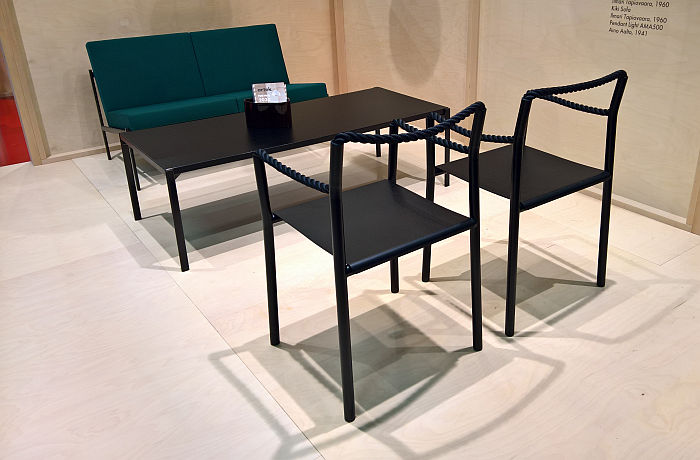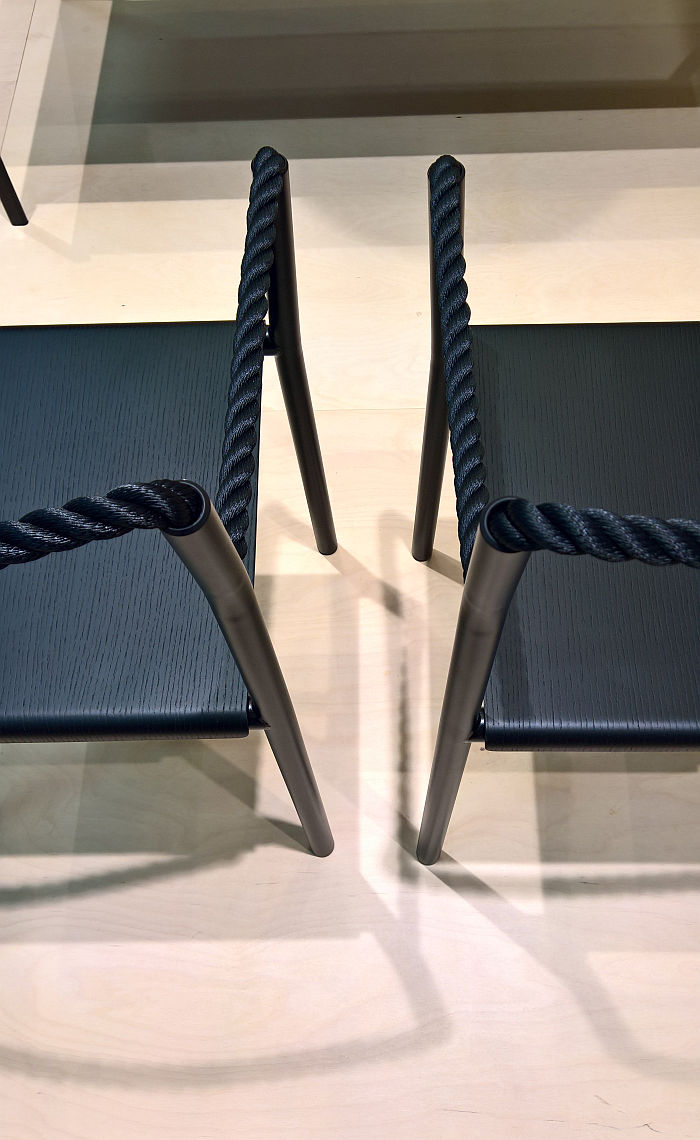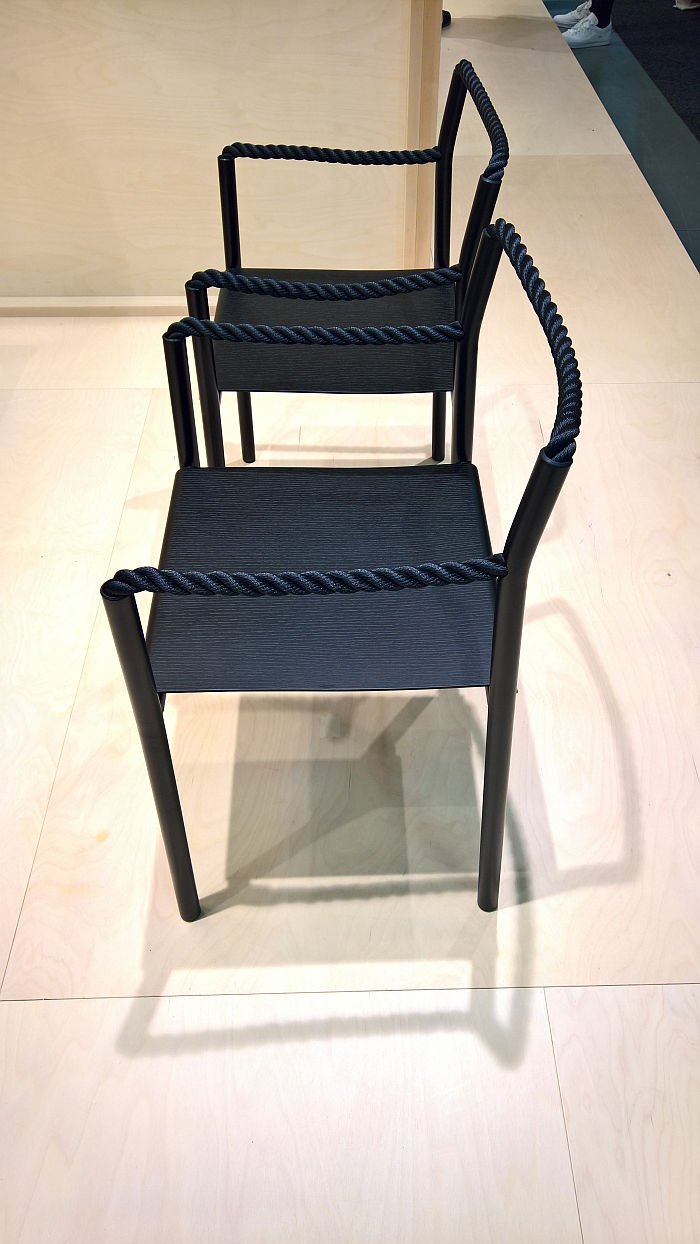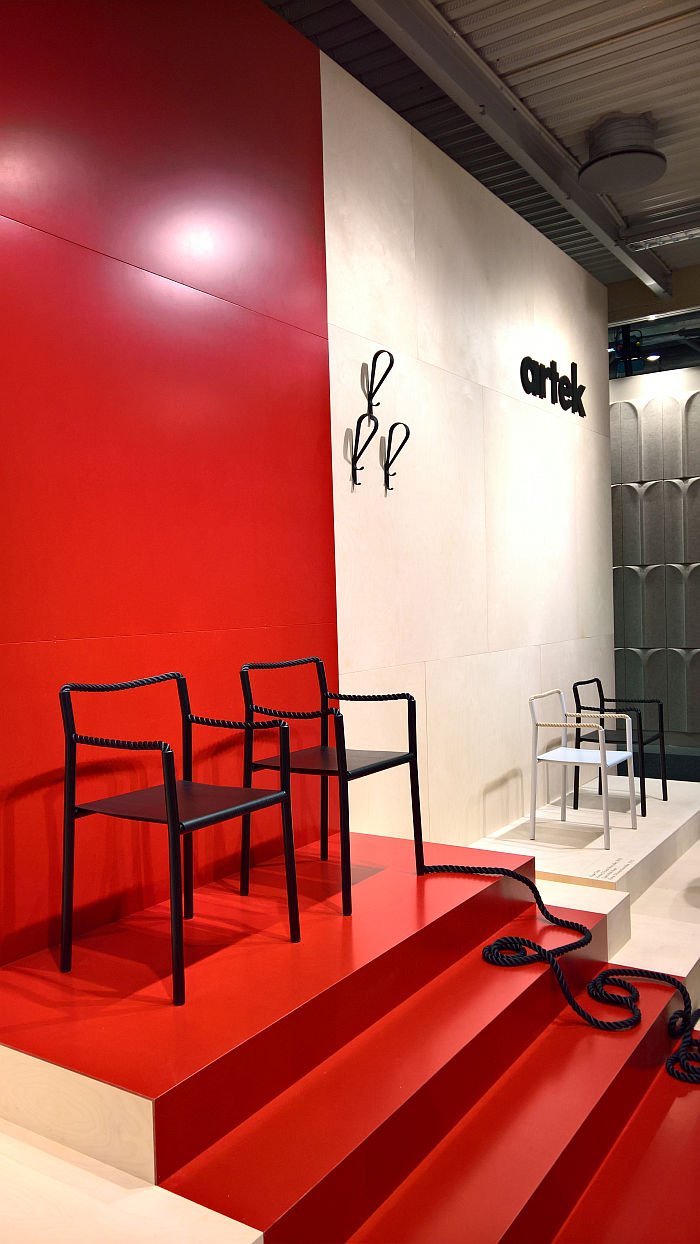Artek | Carl Hansen & Søn | Designer | Exhibitions and Shows | Producer | Product | Stockholm Design Week | Stockholm Furniture Fair
With the 2020 edition Stockholm Furniture Fair celebrates its 70th birthday.
Grattis på födelsedagen!
We did think about taking along a cake, but knew the halls of Stockholmsmässan would be filled to the rafters with Kanelbullar, as indeed would we.
And so by way of a present, a Stockholm Furniture Fair 2020 High 6!!
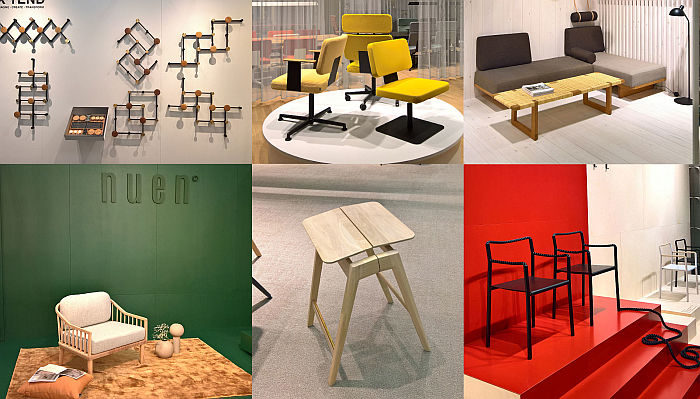
The first thing to say is that we feel that, for us, EIO is but the start of a journey.
The second thing to say is that ahead of any trade fair one tends, automatically, to reflect on previous editions, what was good? What was not good? Who you hope to see again? Who you are actively avoiding? Whose progress are you most keen to catch up on? etc? etc? etc? And so, yes, we probably did have Lea Lacroix's Capellagarden Trä from Stockholm Furniture Fair 2019 somewhere in our minds when we stumbled across the EIO lounge chair from Norwegian label Nuen.
Not that they are the same objects, far from it, they are very, very different beasts. If both equally satisfying and engaging beasts.
Designed by .... no...... we'll get to that.... the story of EIO is the story of two young Norwegians, Kristian and Lene, who in 2018 moved from Oslo to Huglo, a 13.5 km island in the Hardangerfjord on Norway's west coast, home to some 90 inhabitants, a small furniture factory ..... and an island for another day. Here our focus is and must be EIO.
Featuring that low stick back that was once a common feature of such chairs, EIO is not only a pleasingly formed object, a very welcoming and inviting object, one with a familiar unfamiliarity that makes it easily communicative, but also an object which provides for an equally uncomplicated sitting experience, is an object, arguably, best intended for dropping in to from time to time, be that in a living room, conservatory, bedroom, hotel lobby, wherever. Which isn't to say one couldn't sit for longer in it, one could, and we would have if given the chance. But that's not really where we see EIO's strength........Although that said, the pleasingly wide seat means that it could, we didn't try, but it could, should, happily accommodate two: not two adults, but certainly two children, or an adult and a child, an adult and a dog, and adult and a cat, an adult and a wombat, and thus perhaps an object to curl up in and read, chat or just chillax together. A place of community as much as relaxation.
And is also an object that is very much more than the sum of its parts; parts that are sourced and worked (more or less exclusively) locally, and raised to an object that is as much of western Norway as from western Norway, including cushion covers crafted from the wool of semi-wild Old Norwegian Sheep, a fact that in any other object could have swung our interest, with EIO we were already hooked.
And the designer?
That would be Lene. We think. We're not a 100% sure. In a world where designers are key to the design narrative, a situation we accept our share of the blame for, and are to happy to inhabit, there is something pleasingly vague about Nuen; the products being left to explain themselves through themselves rather than through a designer. OK through themselves and Instagram optimised soft focus shots of them on Huglo, but its 2020, ¯\_(ツ)_/¯ At first we thought Nuen's vagueness was just a Norwegian thing, but the more we've researched Nuen, and you know we have researched Nuen, the more we believe it is part of an attempt to reposition our relationships to furniture objects, part of who Nuen are, part of why Nuen are, part of why you leave Oslo for Huglo and the challenge of creating a sustainable, economically and environmentally, furniture brand with the aid of not only local craft and material expertise, but the input of your intended market. We could be wrong, but it is, along with clarifying the question of the designer, something we plan to get to the bottom off.
As we say, for us our meeting with EIO in Stockholm feels like the start of a journey.....
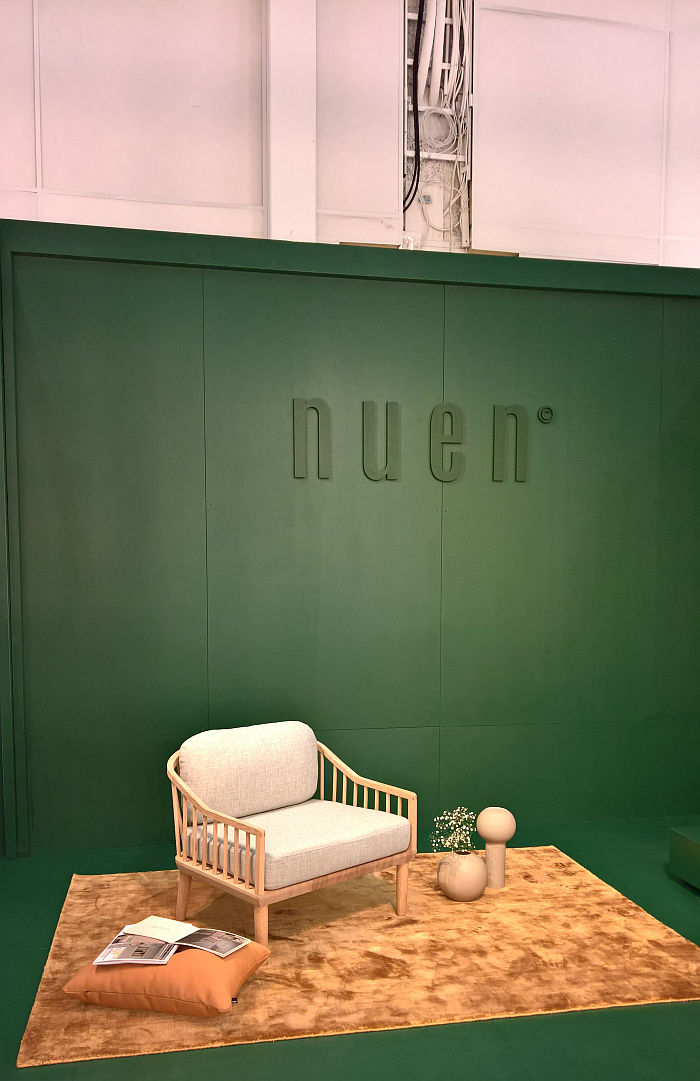
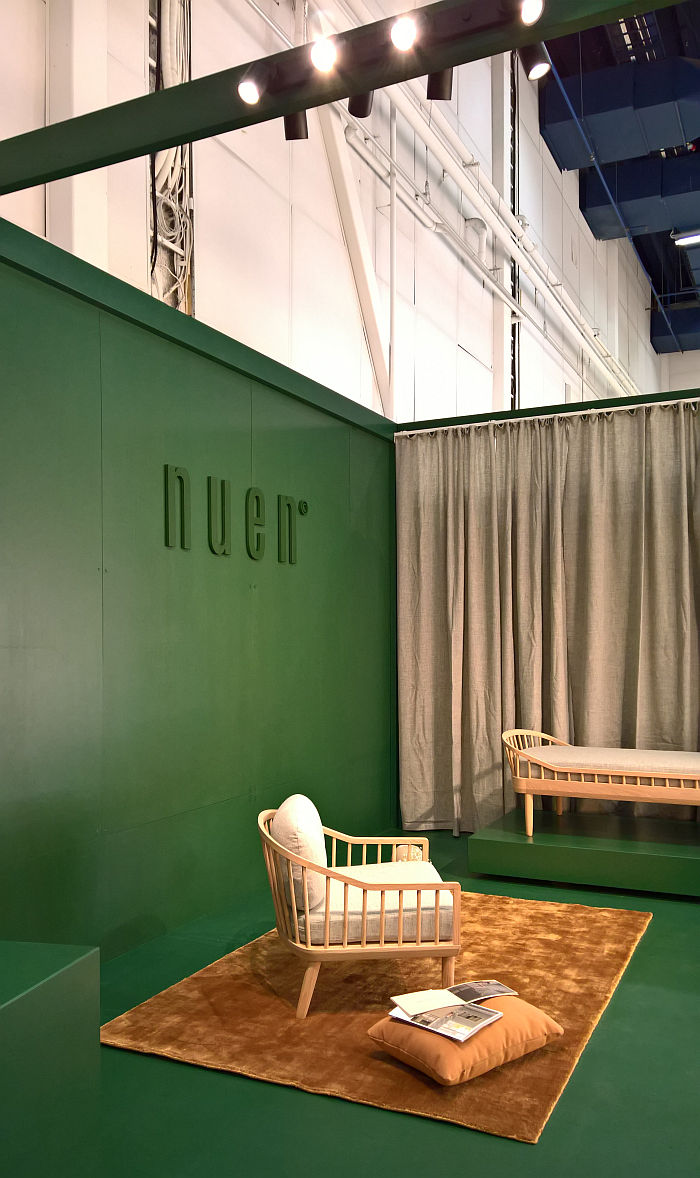
X-Tend is one of those products we missed at IMM Cologne, or more accurately put, half-missed: we passed the LOCA stand while rushing off somewhere else, had a quick look and then had to dash, but made a mental note to return later. And found our mental note later that evening while on a train pulling into Berlin Spandau.......
Fortunately fate isn't always against us and arranged a quick wiedersehen in Stockholm.
LOCA less made a name for themselves as more were established on account of the KNAX coat hanger, and there is something equally as elementary and inherently satisfying in X-Tend.
Created by Thomas Pedersen X-Tend is supplied as a basic kit of plastic arms and both wooden and brass hangers/knobs: and most importantly is freely configurable, as in the form is configurable as is the position of the hangers/knobs. And also freely X-Tendable, an important aspect in any growing home but also in any growing office, restaurant, hairdressers, etc.
Quite aside from its easy formal and functional flexibility one of the real joys of X-Tend is that hangers/knobs are also the screws which hold the bars together, that which gives the structure its stability, and that without the need for any X-Tras. A design reduced to an X-Treme bare minimum.
If we've understood correctly, which isn't always the case, the plan is to construct the plastic components from recycled plastics, recycled plastic garden chairs to be precise. And which aside from any other factors helps highlight that given the inherent flexibility and variability of X-Tend, it's unlikely it will ever itself need to be recycled. Just reconfigured. And reconfigured. And reconfigured. And.......
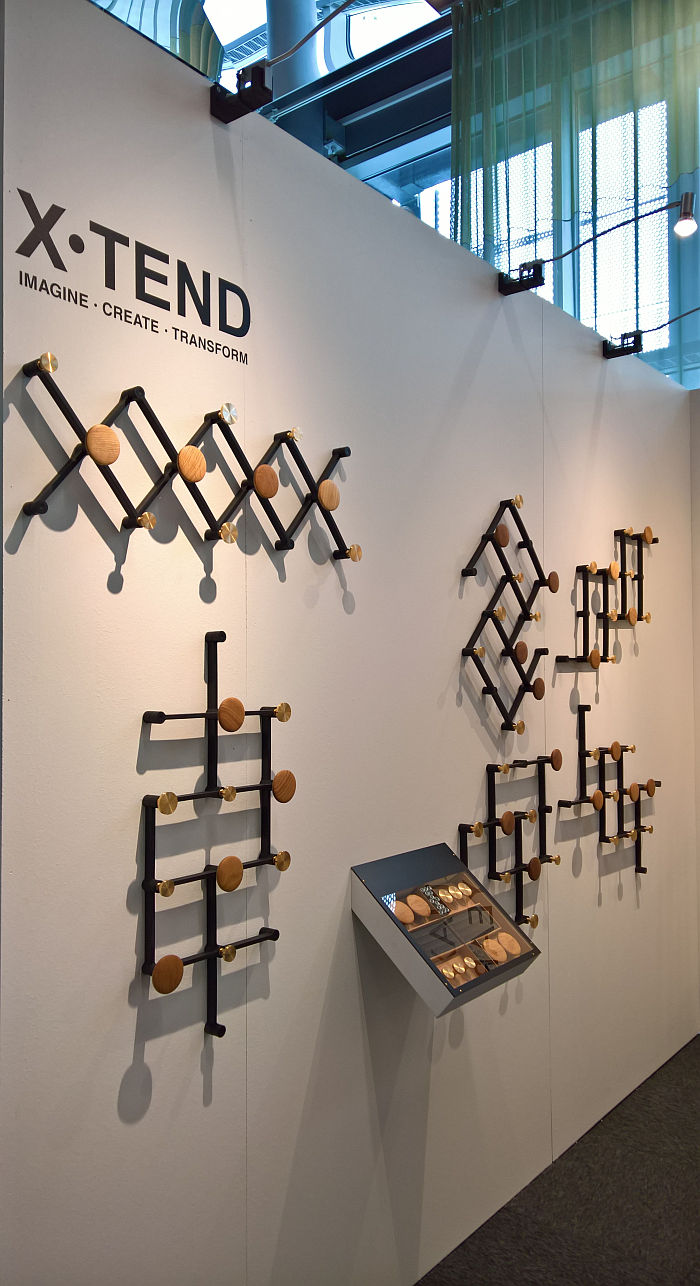
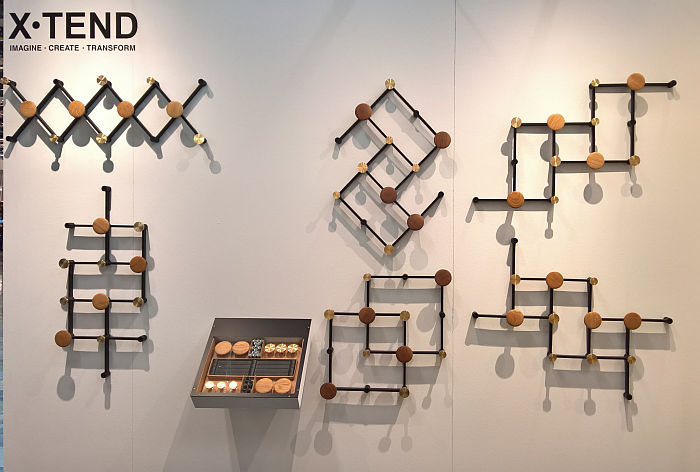
A stool on which you can both sit or perch isn't in itself particularly new, normally however such are either more an object than a stool or involve a technical mechanism, Knekk requires nothing more technical than a marginally asymmetrical frame and a marginally sloping front edge of the seat: sit back with your feet on the foot rest it's a normal stool, slide forward and your perching, slide back and your sitting, slide forward perching, back sitting, forward perching, back sitting, forward really, really starting to annoy your colleagues........ And while you do Knekk stands impassively there, providing in both positions an assured and unwavering stability and support.
Conceived by Jon Fauske in context of his graduation project at Oslo School of Architecture and Design, Knekk is one of those objects, or rather functionalities, that we assume exists, but are, very pleasingly, having extreme difficulties locating, the closest we're getting are musicians' stools. In which context, Knekk is just as applicable as a musicians' stool as an office/home/home office stool. Or indeed reception stool, shop assistant stool, cafeteria stool, etc.
Despite the seating/perching stability offered Knekk is a lightweight, transportable object, one based around a very simple construction mechanism which presents itself with an easy accessibility, which is stackable and which, for all, effortlessly takes the machine out of mechanised seating, employs intuition and natural body movement rather than pivots and screws, takes the consideration out of whether to stand or perch, it becomes an intuitive response to the moment, and thereby becomes anonymous. A solution not an object.
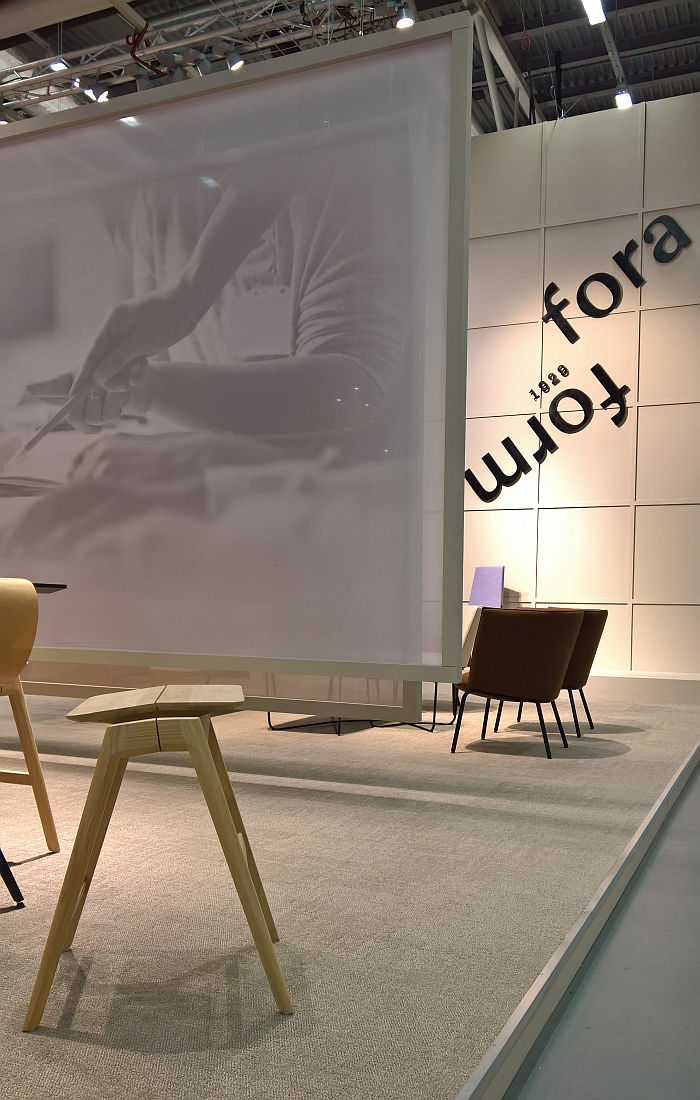
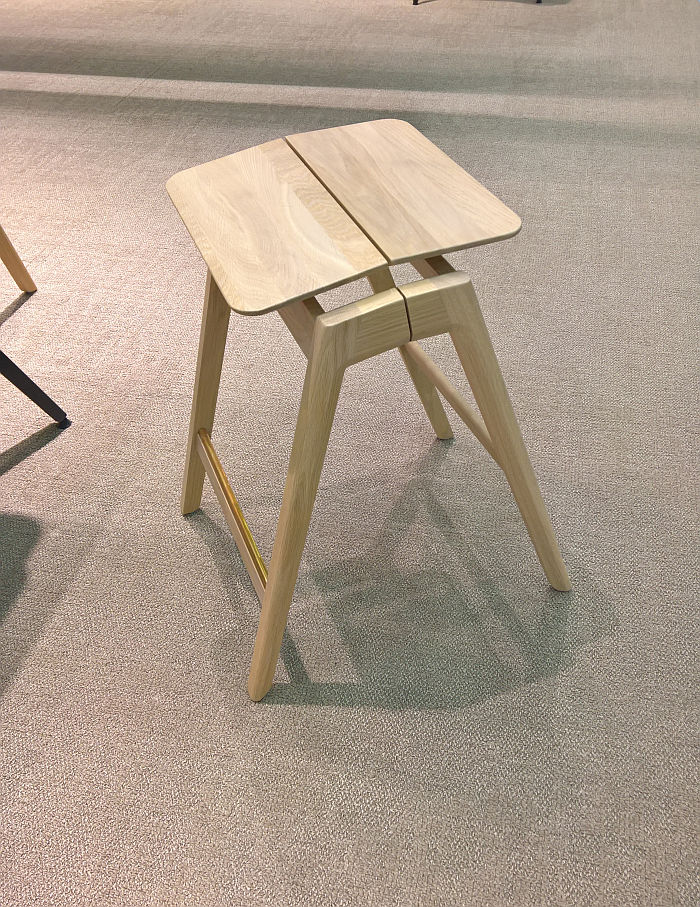
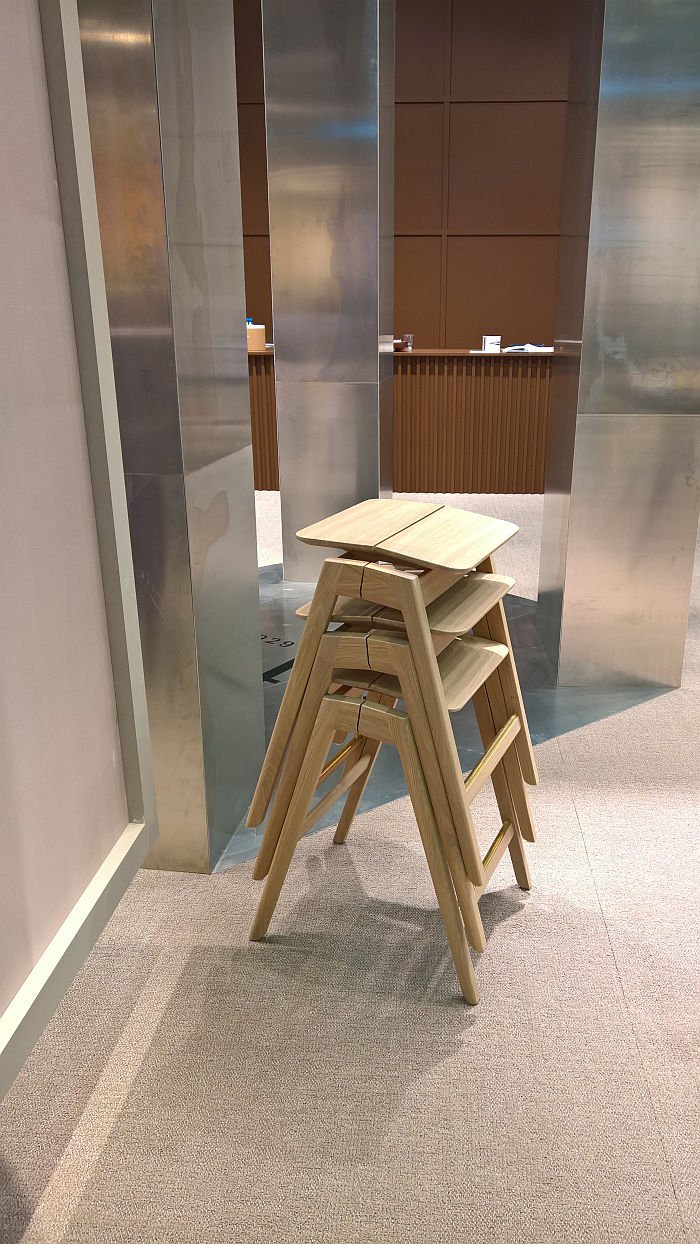
As regular readers will know, we're not that keen on re-issues, or better put tend to shy away from them in context of trade fairs.
But there are times when one has no choice. Times such as the BM0865 Daybed by Børge Mogensen.
First presented at the 1958 Copenhagen Carpenter's Guild exhibition, the BM0865 is, essentially, Japanese Tatami mats raised up on an audaciously simple monolithic, almost naively so, pedestal and upholstered for late 1950s Danish sensibilities. And much like Tatami mats the one size only option serves as the basis for a most basic of modular systems, yet one which still allows for the happy creation of a variety of domestic arrangements. And it is very much a domestic product, we don't want to see the BM0865 in hotel lobbies or as a lounge area in some hip office space. It's for the home, it is a sofa landscape for all who don't want a sofa landscape. And for all is a sofa landscape for all who don't want a sofa landscape in a smallish space. Not only is is the BM0865 formally reserved, is also succinctly compact.
With the triangular cushions in place the seating area is somewhat shallow, not unpleasantly so, it is most comfortable, but just shallower than contemporary sofas: however, we'd argue, with a few selected scatter cushions, or simply leaning against a well insulated, and potentially wool tapestry hung, wall, one approaches a more familiar depth. Or turn them through 90 degrees and stretch your legs; and while we didn't actually sleep on it, we did lay back and stretch out to (more or less) our full length, and also considered sitting cross-legged on it. Which we're considering a lot these days, arguably because our knees no longer allow us to do such.
A joyously, untroubling and untroubled object the BM0865 has a freshness that belies its age, a freshness that comes from an honesty of construction, and honesty of intention and an honesty of function, and is a work which could teach a few younger objects a thing or two about the essence of furniture design.
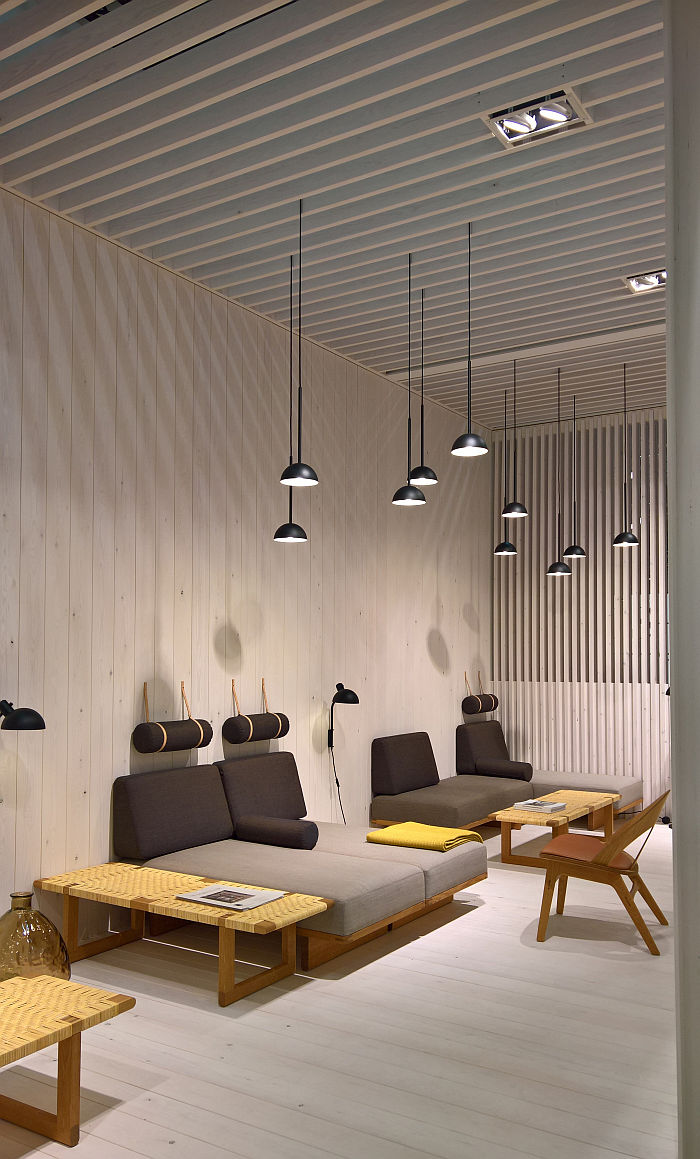
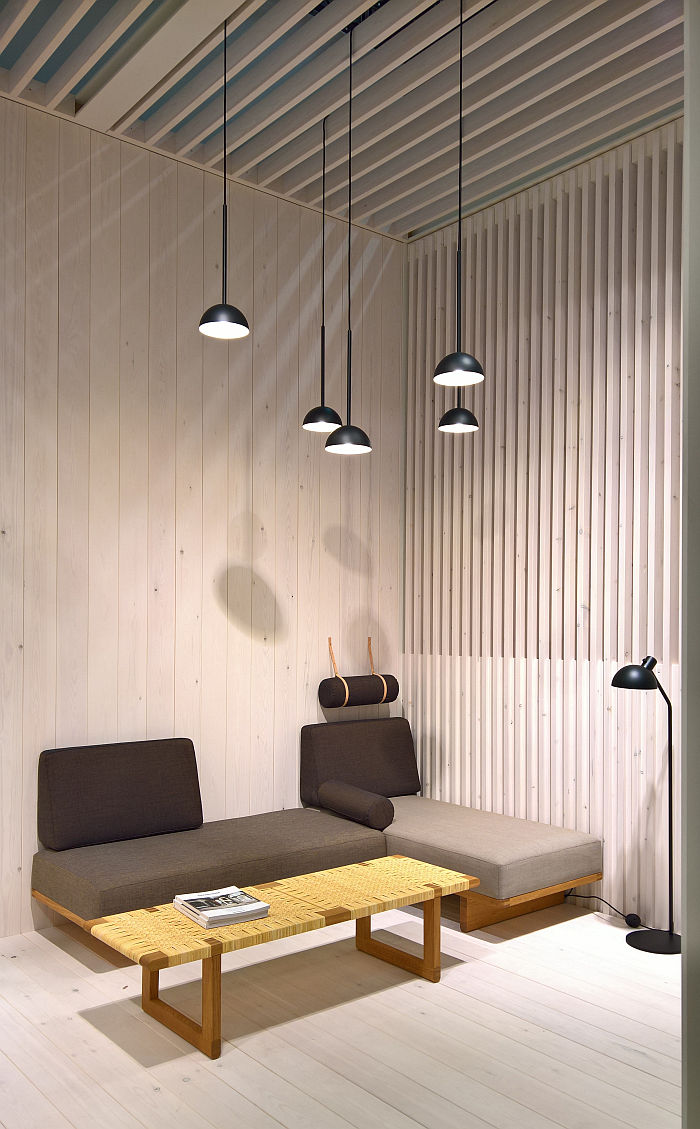
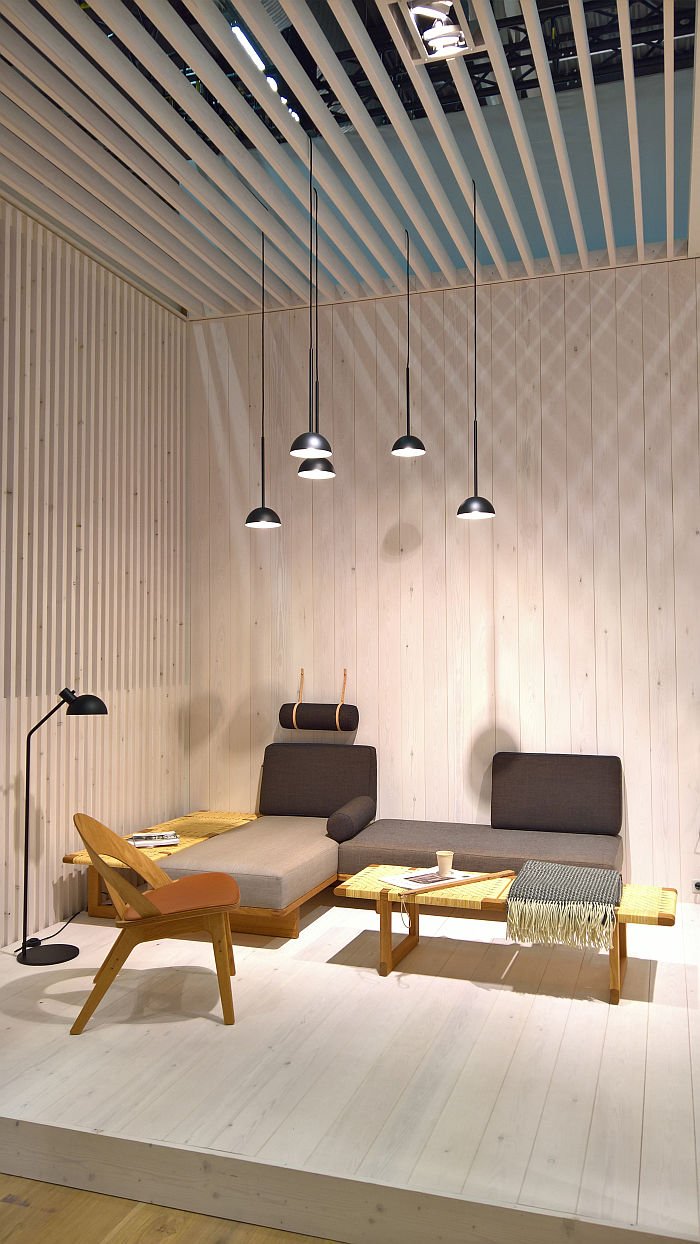
Thomas Bernstrand & Stefan Borselius's Grand Chair caught us some what unawares, on the one hand our thoughts were, admittedly, miles away as we passed the Horreds stand, and on the other by its defiant, unyielding quadratic geometry. We thought that in our inattention we'd wandered into the 1970s.
But once it had our attention, it kept it.
A very neatly proportioned and smartly scaled object, and one which allows for a very satisfying degree of sitting comfort, for us the key to Grand is on the one hand the dialogue between seat and backrest, or at least in the lower backed version, in the higher backed version we find the top layer disrupts the tension between seat and backrest that exists so potently, importantly, in the lower version; and on the other by very elegant use of sheet metal to allow for a resilient, adaptive backrest, a conceit that isn't new but is usually applied with a greater degree of subtly than in Grand. But then Grand celebrates it's lack of subtlety; its not boorish or dominant, it's not the nouveau riche invading the domain of old money, it is a very reserved, reduced, charming and communicative object, just unsubtle, quadratic, slightly idiosyncratic.
Something in many regards underscored by the armrests which exist almost as if a three year old had been tasked with designing armrests for an office chair: and because three years olds react with an unquestioning honesty, produced something unquestioningly honest. And armrests which work as armrests, work as Grand chair armrests and help create a very rounded, coherent, comprehensible visual.
Available with a choice of bases Grand is one of those satisfying objects that doesn't do anything particularly new, but does it very satisfyingly, does it very well, does that which one demands of it in an accessible, adaptive, responsive fashion, and which while unquestionably Grand as in first-rate, dignified, splendid, sublime definitely isn't Grand as in lofty, pretentious, opulent, pompous.
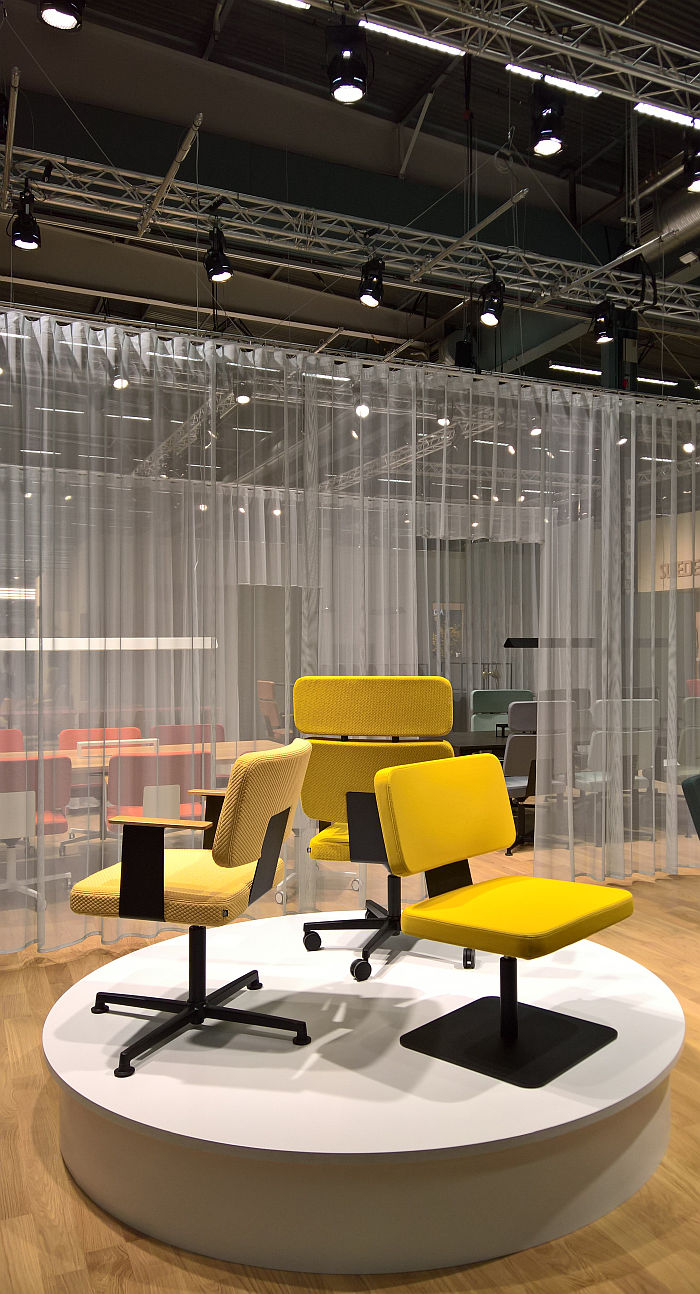
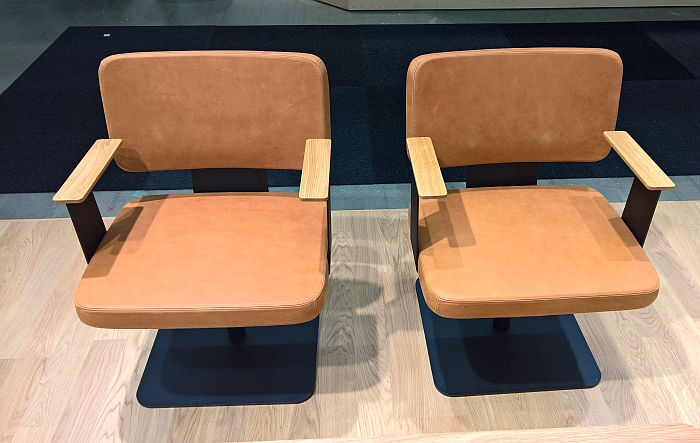
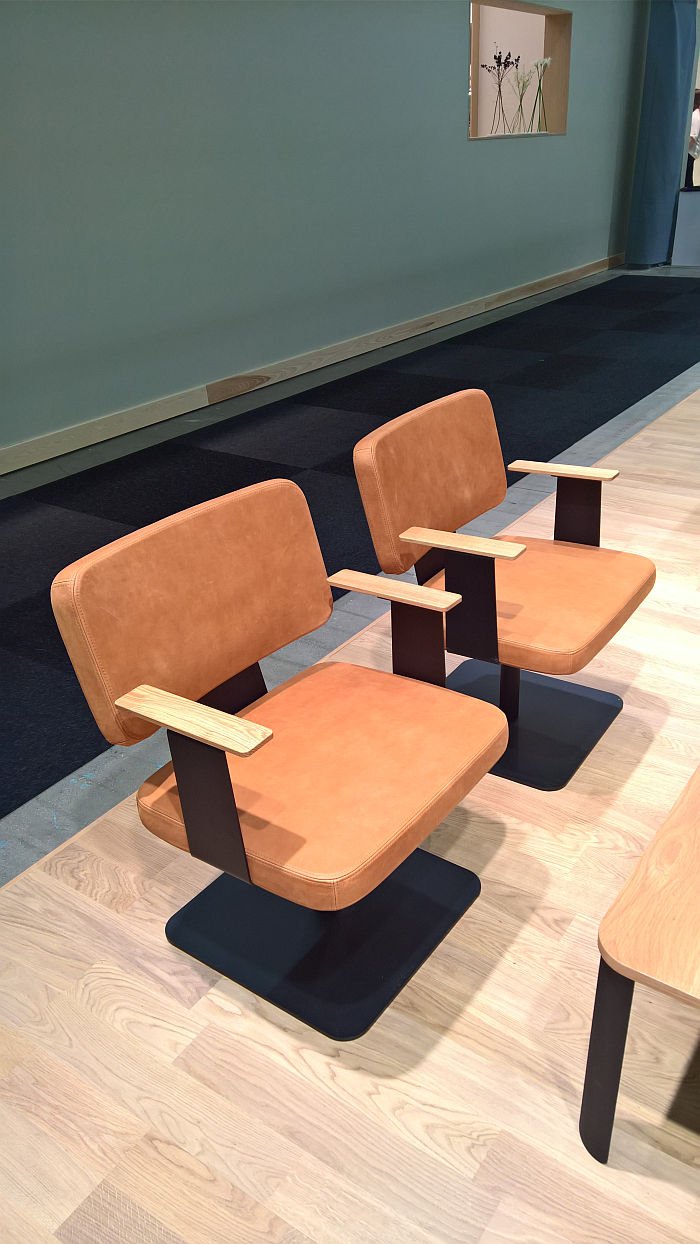
If we're honest, which we always try to be, upon viewing the Artek stand we were initially much more taken by Ronan and Erwan Bouroullec's new Tupla wall hook than their new Rope chair. Clear as we were which was the major product. And where our attention should be.
Yet while very appreciative of the Rope chair's formal and figurative accents, of the implication of a backrest, of the formal reduction, of the constructive simplicity, of the technical finesse in achieving that simplicity, of the very open nature of the work, physically and semantically, we kept coming back to Tupla.
But then as we were sat there in a Rope Chair we got chatting to the person in the Rope chair next to us, rare for us, we are solitary creatures by nature, tend to shy away from all forms of human interaction; but the young man next to us seemed affable, and the conversation flowed, as these things do, over Artek, fountains, Milan, Brittany and comfort, which had been our problem with the Rope Chair.
Our neighbour, who appeared well versed in such considerations, spoke, and we paraphrase, of sitting comfort being something that one must find, not something that is necessarily automatically achieved, that comfort isn't static, is related not only to the object but the condition, the situation, the context in which one sits. He spoke, and we quote, of dynamic comfort, and that a good test for any chair is if after having spent ten minutes sitting in it while talking to someone, you notice the chair. And we realised ten minutes had passed, we were slightly slouching, which surprised us, and were certainly leaning on the armrests heavier than we normally would do; and our thoughts drifted from Stockholm and back to the last time we were tricked into attending a meeting at the smow HQ, and how we'd continually moved in our chair throughout that ordeal depending on our level of connection to proceedings, and if that was with those around the table, our immediate neighbours, the projection screen, the office space behind us, or our thoughts on the peace, quite, isolation of the smow Blog office. And, and returning to Stockholm, realised that we weren't thinking about the chair we were currently sitting in, and we're comfortable. And that our initial error was to mistake the Rope Chair for a formal dining chair.
Which it what it resembles. Albeit one stripped of all the pomp and accoutrements of a formal dining chair, such as a backrest, and instead one has a resilient, active, mobile, element which weaves through the frame to form responsive armrests before vanishing into the legs, which is much more a chair for the dynamic environment of office conference/meeting rooms, or in a domestic context where it must serve as both task chair and dining chair, than a classic formal dining chair. And which, yes, takes a little getting used to. Or ten minutes and a conversation on Artek, fountains, Milan, Brittany and comfort.

